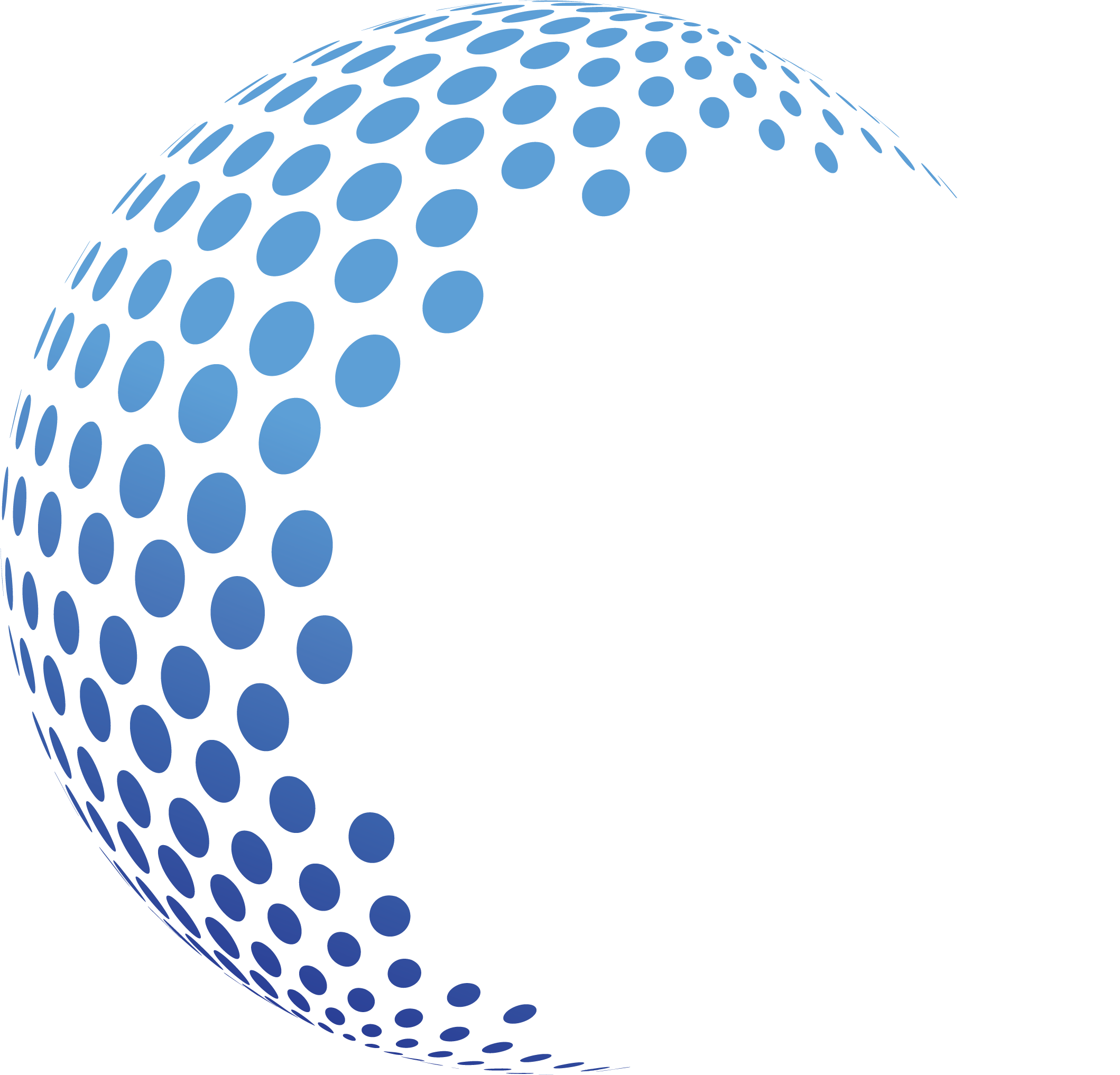ABOUT
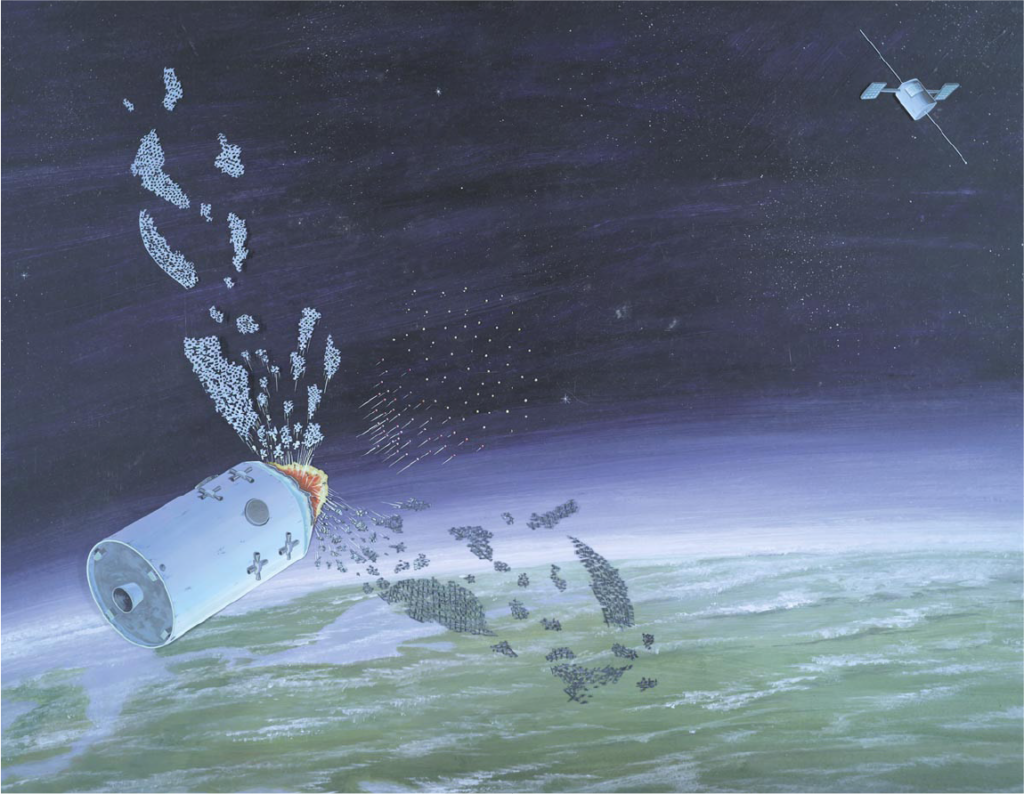
A “space weapon” is generally defined as a space-based or co-orbital weapon system that strikes a target – either in space or on Earth – from orbit. It is important to acknowledge that no hostile use of a space-based or co-orbital anti-satellite weapon (ASAT) has been recorded. Indeed, preventing the development of this class of weapons has long been an objective of international arms control diplomacy. To date, most weapons systems that have been developed and tested against objects in space have been based on Earth (see Issue Guide related to ground-based kinetic anti-satellite weapons).
Still, space-based weapons have been contemplated for decades, although only a few concepts have reached the development stage.
In this Issue Guide, we examine the potential to use weapons-capable technology against other objects in space, also known as co-orbital ASATs.
Many capabilities can have both peaceful and hostile functions. It is important to distinguish between tests of space-based systems that could have residual ASAT capabilities and tests of dedicated weapons systems.
Nonetheless, it appears that both development and testing of enabling capabilities are accelerating. Thus, it is difficult to state with certainty that there are or are not currently any systems with weapons capabilities in orbit. But there certainly are objects in space that could be used as weapons, and some behaviours in space have been interpreted by other actors as threatening. As well, there are indicators that Russia may be pursuing a dedicated co-orbital ASAT system.
SPACE WEAPONS AND SPACE SECURITY
Capabilities that could enable space-based weapons are proliferating and risk accelerating an arms race in outer space. A lack of transparency about advanced orbital activities that could pose a threat to other objects on orbit further accentuates security concerns in outer space. Beyond the immediate targets, weapons in outer space also threaten many additional objects in orbit through the production of space debris and environmental contamination (see related Issue Guide on debris and anti-satellite weapons).
HOW DOES A SPACE-BASED ASAT WORK?
A weaponized satellite manoeuvres into close proximity with a target satellite and then takes some action to disable the target. This action could include kinetic hit-to-kill, directed energy or conventional explosive techniques. Less destructive but still harmful activities could include blinding satellite sensors, or the use of radiofrequency interference.
There are concerns that the deployment of advanced orbital capabilities by a number of states today is creating de facto (and possibly dedicated) weapons capabilities.
HAVE ANY SPACE-BASED ASAT SYSTEMS BEEN DEVELOPED?
The former Soviet Union is the only state known to have tested co-orbital ASATs. It developed and tested several such systems during the Cold War, including:
• The Istrebitel Sputnikov (IS) satellite, an explosive interceptor capable of conducting multiple orbital manoeuvres to pass close to a target. Once triggered, the explosion would release shrapnel over an effective range of 50 metres. The IS was tested repeatedly in the 1950s and 1960s. An improved IS-M version had a vertical range of 2,200 kilometres (km) and faster manoeuvrability. The final test of the IS-M system occurred in 1982.
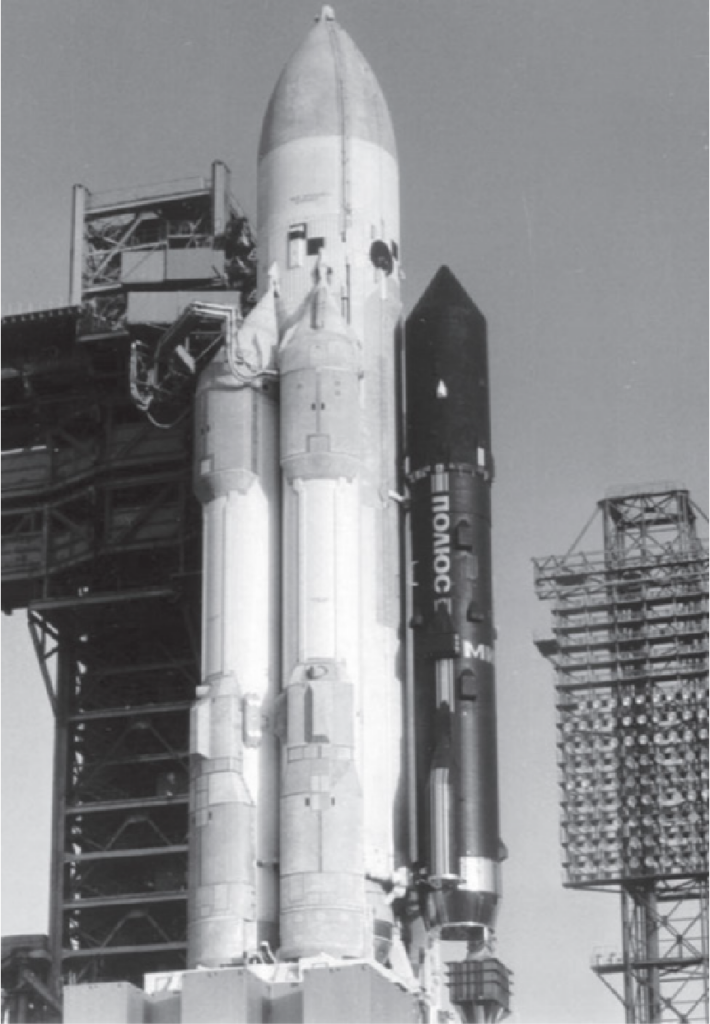
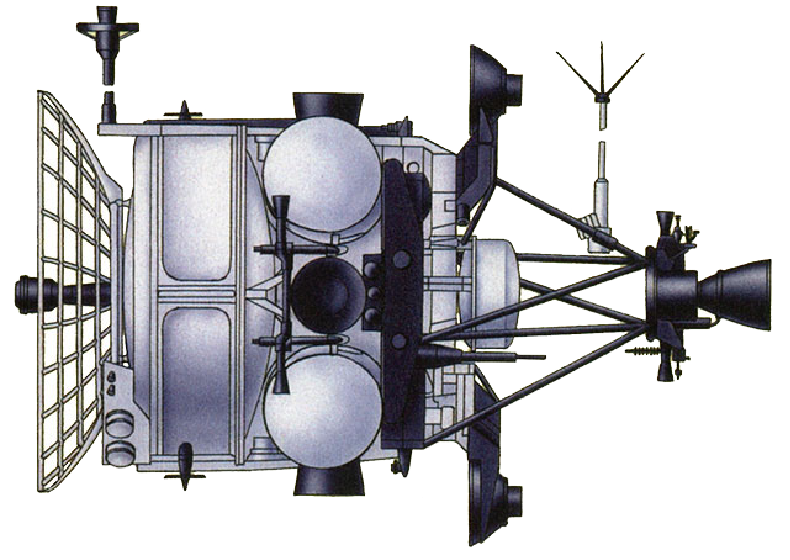
• The Naryad system, an ASAT comprising an intercontinental ballistic missile (ICBM) launch vehicle with an orbital upper stage capable of manoeuvring and deploying missiles on orbit. The Naryad launch vehicle had two sub-orbital flight tests in November 1990 and December 1991. The planned vertical range of the system was between 150 and 40,000 km. The program was cancelled when the Soviet Union dissolved.
• The Skif-DM satellite that the Soviet Union attempted to launch in 1987. It was equipped with a carbon dioxide laser that had previously been fitted to an IL-76 transport aircraft. The launch failed to make orbit and the program was discontinued.
Secure World Foundation has documented 13 flight tests and nine intercept tests by Soviet co-orbital ASAT systems during this era.
While the United States developed several ground-based, direct ascent ASAT systems (see related Issue Guide), it has not known to have developed a dedicated co-orbital ASAT system, although one test of such a capability was conducted as part of the Strategic Defense Initiative in 1986.
WHAT CAPABILITIES MIGHT ENABLE SPACE-BASED WEAPONS?
Many advanced capabilities must come together to orbit a space weapon. Foundational elements include on-board optics for identification and targeting as well as wide manoeuvrability and the ability to conduct precise operations close to a non-cooperative target and possibly physically interact with it. This last capability is commonly captured by the concept of rendezvous and proximity operations (RPO).
Military actors commonly demonstrate RPO capabilities, one reason that any close approach of a foreign satellite raises the concerns of operators. But these capabilities also engaged in emerging civilian, commercial, and non-aggressive military activities, such as satellite servicing and space-based surveillance and inspection (see related Issue Guide on Inspection Satellites). These capabilities are also essential for docking with the International Space Station.
We can most easily identify space weapons when we see how they are being used and when intentions are made clear. Most often, however, military actors try to hide both their actions and intentions. This level of secrecy raises fears about activities such as the release of secondary, undisclosed satellites or other objects in orbit; and the launch of space planes, all of which could carry undisclosed payloads and secondary capabilities.
WHICH STATES HAVE DEVELOPED ENABLING CAPABILITIES?
In recent years several state militaries have demonstrated advanced on-orbit capabilities that could support a space-based weapons system. Most involve RPO operations and are associated with capabilities for space-based satellite servicing and surveillance. They have been demonstrated in both low Earth orbit, where most commercial satellites are located, and in geosynchronous orbit, the location of sensitive military communications and command-and-control satellites.
Frequent speculation that such systems could be developing or testing ASAT capabilities points to a critical lack of trust and transparency among space actors.
UNITED STATES
The United States has developed an array of advanced capabilities.
Rendezvous and Proximity Operations
Many U.S. military programs have developed advanced RPOs, most connected to space-based surveillance and inspection programs, but some more experimental. They include:

• XSS-10 and XSS-11 satellites, launched in 2003 and 2005 by the United States Air Force (USAF) to perform various RPO with space assets in LEO.
• Demonstration for Autonomous Rendezvous Technology satellite (DART), which, in 2005 accidentally bumped into the US MUBLCOM communications satellite while conducting RPO.
• Micro-satellite Technology Experiment (MiTEx) satellites 187 and 188, which were launched in 2006 by the Defense Advanced Research Projects Agency (DARPA) to conduct RPO, including a fly-by inspection of a U.S. missile defence early warning satellite, DSP 23, that failed in 2008.
• ASTRO and NEXTSat satellites, which in 2007, as part of the DARPA Orbital Express mission, performed various manoeuvres and docked with each other for resupply in LEO.
• Geosynchronous Space Situational Awareness Program GSSAP satellites, which are part of the Department of Defense Space Surveillance Network, operate in pairs and provide tracking and characterization of human-made orbiting objects through RPO; the first pair were launched in 2014, a second pair in 2016, and a third pair was planned for 2020.
• The ANGELS satellite, which was launched with GSSAP 1 and 2 in 2014, and conducted RPO with their Delta 4 launch vehicle and undisclosed experiments associated with space-based monitoring.
• ESPA Augmented Geostationary Laboratory Experiment satellite (EAGLE), which was launched in 2018 to test surveying and inspection capabilities in orbit; sub-satellite Mycroft conducted RPO manoeuvres with EAGLE.
Undisclosed Payloads
• The EAGLE program, designed as a main or platform satellite, carries many sub-satellites into space at once. Following its launch in 2018, it released three separate satellites. One, Mycroft, has demonstrated RPO manoeuvres; the activities of the other satellites are not known.
• Two USAF X-37B unmanned, reusable spaceplanes have tested experimental payloads during four test flights. In 2019, one spaceplane released small satellites into orbit. Although it is known that the X-37B is linked to rapid access to space, the lack of transparency regarding its payloads has caused concern in some actors.
RUSSIA
Rendezvous and Proximity Operations
Russia has conducted RPO since 2013. Commentators believe that some manoeuvres have been ASAT tests (see below). Examples include:
• Cosmos satellites 2491, 2499, and 2504, which were launched as parts of other military missions to perform RPO activities. In 2015, the 2504 experienced a minor collision, which might have been intentional. In 2017, Cosmos 2504 rendezvoused with debris caused by China’s 2007 ASAT test.

• Military satellite Olymp-K/Luch, which was launched to GEO in 2014 and has conducted manoeuvres as close as 5 km to other operational satellites, both military and commercial, on many occasions (Note: anything less than 10 km is considered unsafe).
Undisclosed Payloads
• Russia’s acknowledged inspection satellites use a main or platform satellite that releases secondary satellites once in orbit; in some cases, the sub-satellites in turn release additional objects. For example, Cosmos 2519, launched in 2017, subsequently ejected Cosmos 2521, which ejected Object 2523. In 2019 and 2020, Cosmos 2542 ejected Cosmos 2543, which ejected Object 2547 (see below for possible ASAT activity).
CHINA
Rendezvous and Proximity Operations
Since 2010, China has engaged in various RPO demonstrations in both LEO and GEO:
• Satellite SJ-12 manoeuvred to rendezvous with satellite SJ-06F in 2010. It is possible that the two bumped into each other during their lowest approach, but no damage was observed.
• Satellites SY-7, CX-3, and SJ-15 were launched into LEO in 2013. The SY-7, designed with a robotic arm, released a sub-satellite, and the two engaged in manoeuvres and RPO with each other. From 2014-2016, SJ-15 engaged in various manoeuvres to bring itself close to the other two payloads and to other Chinese satellites.

• Advanced Debris Removal Vehicle (ADRV) Aolong-1, the “Roaming Dragon,” was launched in 2016 to demonstrate debris removal. The debris captured was reportedly simulated and the satellite conducted no RPO. However, its grappling capability could be dual-use.
• Satellite SJ-17 was launched to GEO in 2016 to conduct RPO with various Chinese satellites.
• Satellite TJS-3, with a secondary object, was launched to GEO in 2018. In 2020, that object conducted various RPO with Satellite TJS-3.
Undisclosed Payloads
• In 2020, China launched and landed an experimental spaceplane, which released an unknown object into orbit before returning to Earth.
POSSIBLE ASAT ACTIVITIES
RUSSIA
In 2013, Russia began launching satellites into both LEO and GEO to perform various rendezvous and proximity operations, including the targeting of foreign satellites and the release of undisclosed payloads. Many, such as the following, appear to have space-based surveillance and inspection capabilities:
• Cosmos 2521, the satellite ejected from Cosmos 2519 in 2017, in turn apparently ejected “projectile” Cosmos 2523.
• Cosmos 2535 and Cosmos 2536, described as inspection satellites, which were launched in 2019 and conducted various RPO between August 2019 and January 2020. In August 2019, Cosmos 2535 reportedly shed debris.
• Cosmos 2543, which was ejected from Cosmos 2542 in November 2019 and was reported to have closely followed U.S. reconnaissance satellite USA 245. In June 2020, it rendezvoused with Cosmos 2535 (see above) and in July it ejected what appeared to be a “projectile,” labelled Object 2547.
The U.S. Space Force has described the ejected projectiles as ASAT tests, which Russia denies, but independent verification is difficult. With no transparency and regulation of conduct of on-orbit activity, it is difficult to differentiate threatening behaviour in space from such activities as on-orbit space surveillance, servicing, and inspection. However, many experts from the international space community have deemed Russian actions unusual.
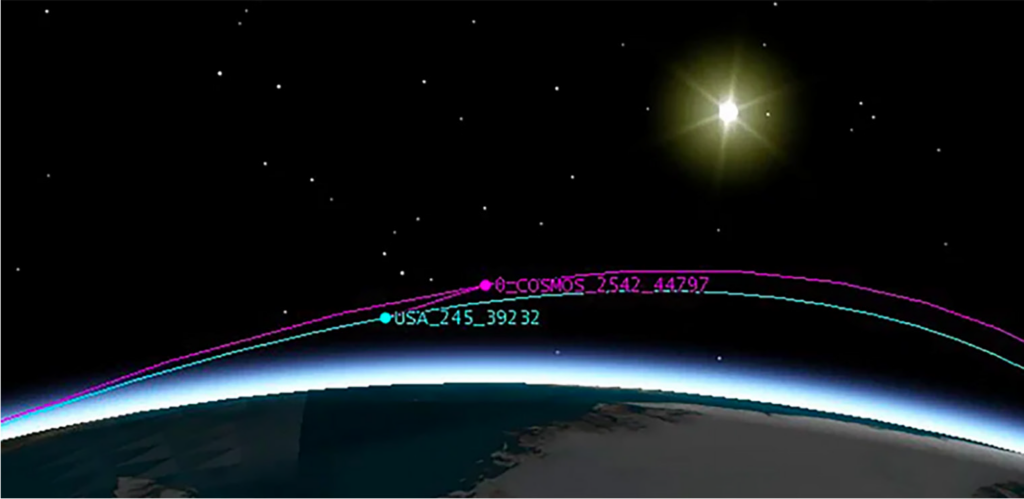
GOVERNANCE
Although Article IV of the 1967 Outer Space Treaty (OST) bans the orbiting or use of nuclear weapons in space, there are no restrictions on the placement or use of conventional weapons in orbit. International law holds that any conduct which is not prohibited is permitted.
Despite an annual UN resolution on the “prevention of an arms race in outer space” (PAROS), efforts to adopt additional agreements restricting the use or orbiting of weapons systems in space have long been stalled within the Conference on Disarmament (see related Issue Guide on the Conference on Disarmament). A Group of Governmental Experts, convened in 2018-2019 to identify further practical legal measures for the prevention of an arms race in outer space, was unable to reach consensus to move forward with the issue.
Some voluntary rules for safe conduct of RPO activities have been adopted the Consortium for Execution of Rendezvous and Servicing Operations (CONFERS) industry forum; these are not applicable to military activities.
The Convention on Registration of Objects Launched into Outer Space, adopted by the UN General Assembly in 1974, requires states to identify and provide information on their space objects. States that launch satellites that engage in undisclosed activities or release undisclosed objects on orbit are acting in defiance of this convention.
RESOURCES AND FURTHER UNDERSTANDING
Air Force Research Laboratory (U.S.), Automated Navigation and Guidance Experiment for Local Space, (ANGELS), July 2014, https://www.kirtland.af.mil/Portals/52/documents/AFD-131204-039.pdf?ver=2016-06-28-105617-297.
Laura Grego, A History of Anti-Satellite Programs, Union of Concerned Scientists, February 2012, https://www.ucsusa.org/sites/default/files/2019-09/a-history-of-ASAT-programs_lo-res.pdf.
Mike Gruss, “Secretive ANGELS satellite part of new space experiments,” SpaceNews, April 14, 2016, https://spacenews.com/secretive-angels-satellite-part-of-new-space-experiments.
Burt Hendrickx, “Burevestnik: A Russian air-launched anti-satellite system,” The Space Review, April 27, 2020, https://www.thespacereview.com/article/3931/1.
Theresa Hitchens, “Russia builds new co-orbital satellite: SWF, CSIS say,” Breaking Defense, April 4, 2019, https://breakingdefense.com/2019/04/russia-builds-new-co-orbital-satellite-swf-csis-say.
Jonathan McDowell, Nivelir (Kosmos -2519 et al): A New Series of Russian Military Satellites, Jonathan’s Space Report, 2020, https://planet4589.org/space/plots/niv/index.html.
Kalla Phrang and Brian Weeden, U.S. Co-orbital Anti-Satellite Testing, Secure World Foundation, august 2020, https://swfound.org/media/207055/swf_us_co-orbital-asat_aug2020.pdf.
U.S. Space Command Public Affairs Office, “Russia conducts space-based anti-satellite weapons test,” July 23, 2020, https://www.spacecom.mil/MEDIA/NEWS-ARTICLES/Article/2285098/russia-conducts-space-based-anti-satellite-weapons-test.
Brian Weeden, History of Anti-Satellite Tests in Space, updated Kalla Phrang, August 6, 2020, https://docs.google.com/spreadsheets/d/1e5GtZEzdo6xk41i2_ei3c8jRZDjvP4Xwz3BVsUHwi48/edit#gid=1252618705.
Brian Weeden & Victoria Samson, eds., Global Counter-space Capabilities: An Open Source Assessment, Secure World Foundation, April 2020, https://swfound.org/counterspace.
Jessica West, “Did Russia test a weapon in space?” Project Ploughshares, July 2020, https://ploughshares.ca/pl_publications/did-russia-test-a-weapon-in-space.

